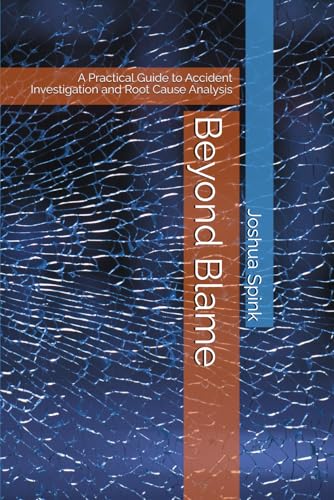Night sledding brings a whole new level of excitement to your favorite winter activity. The crisp air feels even more magical under a sky full of stars and the thrill of racing down a hill in the dark is hard to beat. But with all that fun comes a few extra risks you just can’t ignore.

You don’t have to give up nighttime adventures to stay safe. With a little planning and the right precautions you can enjoy every snowy run while keeping yourself and your friends out of harm’s way. Ready to make the most of your next night on the slopes? Let’s dive into some simple tips that’ll help you sled with confidence after sunset.
Why Night Sledding Requires Extra Precautions
Dim lighting makes it harder to see obstacles like rocks, branches, or uneven snow on night sledding hills. Shadows often hide dips or tree stumps that daylight exposes, so you might spot dangers later.
Lower temperatures at night increase the risk of cold-related issues like numb fingers or hypothermia, especially if you sit still between runs. Wind chill rises after sunset and multiplies the effects of moisture from snow on your clothes.
Limited visibility also causes trouble when more sledders join the hill. It’s common for groups to lose track of each other in the dark, increasing collision or separation risks.
Less foot traffic at night means you’re less likely to find nearby help if an accident happens. Emergency response time slows down, so a well-lit area, prepared group, and emergency plan all gain importance when sledding after dark.
Rely on extra gear, checks, and habits to turn this thrilling winter sport safe after sundown.
Essential Gear for Safe Night Sledding
Staying prepared keeps every night sledding trip fun and worry-free. Reliable gear isn’t just useful—it guarantees you stay visible and protected even after dark.
Proper Lighting and Visibility
Brighter headlamps and wide-beam flashlights help you spot hidden dips, trees, or other sledders. LED headlamps rated at least 200 lumens let you see the path even on moonless nights. Reflective vests or arm bands boost your visibility from all angles, especially around other groups. Glowing LED sticks clipped to your sled help others track your route.
Warm and Protective Clothing
Insulated jackets, weather-resistant snow pants, and layered base gear keep you warm when temperatures drop below freezing. Waterproof gloves and thermal socks protect fingers and toes from cold exposure, even if you touch snow often. Neck gaiters and winter hats reduce heat loss, especially on longer runs or slower climbs uphill.
Helmets and Safety Equipment
Certified snow helmets lower your risk of head injury if you hit ice or lose control. Padded knee and elbow guards protect joints from impact when maneuvering around rocks or bumpy stretches. Hard-shell sleds with handgrips provide better control over speed runners and saucers when trails turn rough. Carrying a small first-aid kit helps you handle minor injuries without delaying your night out.
Choosing the Right Location and Sled
Night sledding lets you explore winter in a whole new way, but safety starts with your choice of hill and sled. Smart location and gear choices keep you having fun all evening.
Evaluating Sledding Hills
Scout hills before dark for night sledding to avoid unseen obstacles. Look for gentle slopes with wide, open runs—avoid steep or crowded hills, since they leave little margin for error. Pick hills with few trees or rocks and a long, clear runout at the bottom to slow down safely. Prefer well-lit hills or areas with lamp posts, as artificial lights let you spot shadows, ice patches, and other sledders. If local parks or ski centers offer designated sledding nights, choose these, since they’re maintained and patrolled for extra safety.
Picking a Safe Sled
Use sleds designed for winter sports and night sledding, not makeshift items like trash can lids or cafeteria trays. Choose models with steering and braking features—steering lets you avoid collisions, and brakes help control speed on icy slopes. Select sleds built from durable materials like high-density polyethylene, which withstand cold and resist cracking at night. Look for handles with good grip and avoid sleds with sharp edges or exposed metal that could cause injuries. Bright colors or reflective elements on your sled help others see you in low light, reducing the risk of nighttime crashes.
Best Practices for Night Sledding
Night sledding transforms familiar hills into exhilarating playgrounds, but safety practices keep your rides fun. These strategies draw on years of winter sports experience under the stars.
Sledding With a Group
Sledding with a group increases visibility and support if someone gets injured. Share locations using group messages before arriving at the hill. Assign visual gear, like colored armbands or reflective tape, to each person. Use group headlamps and keep lights on during every run. Perform regular headcounts after each descent, especially on crowded or wooded hills. Designate a meeting point that’s easy to see, such as a signpost or lamp, to regroup if anyone gets separated.
Setting Clear Boundaries
Setting clear boundaries keeps you away from obstacles and out of restricted areas. Mark the starting and stopping zones with bright flags, glow sticks, or cones. Notify everyone in your group about fence lines, hidden drop-offs, and parking boundaries before sledding begins. Use walkie-talkies or phone apps to update the group about any changes. If the hill borders woods or water, place extra lights or signs to prevent accidental entry. Remind everyone to stay within the flagged or lit area for every run.
Managing Speed and Control
Managing speed and control on a sled prevents accidents in low visibility. Check sled types and use models with steering and brakes for sharper turns or busy areas. Maintain safe following distances—at least one sled length per 10 mph of speed—to avoid collisions. Avoid icy patches that increase speed and reduce the ability to stop. Test your route before racing to memorize turns, bumps, and obstacles. Slow down when approaching the end of a run, using your feet or sled features to help brake. If you notice others struggling with control, stop sledding until the path is safe.
How to Handle Emergencies
Safety means acting fast and staying prepared when night sledding brings unexpected trouble. Experienced winter sports enthusiasts know that quick responses can make all the difference if you or your group face injuries or get separated in the dark.
Basic First Aid Tips
Handle minor injuries efficiently on the hill with simple first aid. Clean cuts or scrapes using disinfecting wipes from your sledding kit, then cover them with sterile bandages to keep them protected. Treat bruises or bumps with a cold pack—or snow wrapped in cloth—to keep swelling down, but keep direct ice off skin to avoid frostbite. If anyone hits their head or feels dizzy, stop sledding right away and monitor for signs of concussion, such as confusion or nausea. For cold-related issues like mild frostbite or numb fingers, change out wet gloves, add dry layers, and move indoors if you’re able. Always know where your first-aid kit sits in your bag, and check that it’s restocked before every night out.
Contacting Emergency Services
Call for help quickly in a night sledding emergency. Save the local emergency number in your phone before you head out, and make sure your device’s battery is full. Use your phone’s flashlight or a whistle to help rescuers find your group if you’re off the main trail. Activate location sharing on your device if reception allows, or drop a pin to send your GPS location by text. Name your sledding spot and the nearest landmark when speaking with emergency services—for example, “South side of Winter Park near the third parking lot.” Stay with your group and keep everyone visible until help arrives, using headlamps and reflective gear so rescuers spot you fast.
Conclusion
Night sledding brings a whole new level of fun and adventure to your winter outings. With a little planning and the right precautions you can enjoy the magic of the night while keeping yourself and your friends safe.
Stay mindful of your surroundings trust your gear and always look out for one another. When you put safety first you’re free to focus on the excitement and create lasting memories under the stars.
















